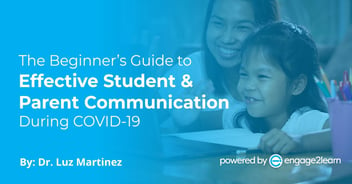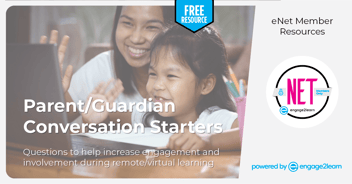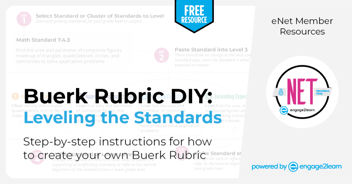engage2learn Learning Model & Citizenship | engage2learn
In all of the summits we have been facilitating lately, we are hearing a consistent pattern from community members in their answers to the question about highest hopes. It is one of the primary purposes for public education in a democratic society:
that students become productive, contributing, responsible citizens.
Of course, it is one of our core beliefs and highest hopes as well and continually motivates us as a company to be on the road tirelessly partnering with districts and communities who understand that to stand still in America means to go backward.
We are a country always striving to be the best and to have the highest quality of life and to be the most innovative and the most inventive (evidenced by our continued reign at the top of the patent list despite our smaller population than countries twice our size). It is why, as Yong Zhao so eloquently pointed out this week at Midwinter, America is still leading the world in entrepreneurial capability, despite the efforts through standardized testing to stifle those abilities. Zhao is the renowned speaker who consistently stands up against the Common Core. As he shows in the data, the countries who are training their students to score at the top of the charts by picking the right answer on those tests are the ones that are the least capable to become entrepreneurs [View Data]. It is the backbone of our society and economy – the ability to think independently and act on our dreams. Our country is founded on independent thinking and strong, moral values and stabilized by free and public education.
Thinking about the hopes of these community members for productive, contributing citizens also makes me reflect on the many times these past few years I have seen evidence in our Engage! Learning Model (ELM) classrooms of young adults awakening to their own rights and responsibilities as American citizens–moving from a state of entitlement and complacency to a place of understanding and motivated citizenry. For example, in a recent challenge to students to master TEKS in the US Government course, students in Corpus Christi were asked to analyze government spending and choose which government programs should be cut. The students were appalled at the waste they found, and their solutions were very sophisticated. They sent them to government officials.
In another example, I attended a forum where the teachers had invited the local Democratic and Republican party chairpersons to speak to the students about their respective platforms. One of the party representatives made the case for why students in poverty (most of these students were) needed government assistance to make it in the world. The students, who had been working in ELM for some time and had already developed the ability to think for themselves, pushed back and told the representative that they “only need the opportunity for education and are able to use their own minds and hard work to make their own dreams come true…”.
Of course, there are numerous examples of ELM units where students are interviewing veterans, or engaging in service activities, or interacting with local levels of government to make recommendations, or providing solutions to local businesses to increase sales, etc. Elementary students in the Corpus Christi area recently partnered with a local grocery store to provide kid-friendly signage. Middle school students in the Houston area recently brainstormed with a local parks and recreation department to decrease erosion in a local park. High school students in the Metroplex recently shared solutions with a chamber of commerce on increasing tourism to the community. In another high school economics course at an alternative campus near Houston, an amazing teacher designed a unit where students used their own checks or samples to look at where all the withholding goes. Students were shocked to learn they were paying money out of their own earnings to support welfare. One student remarked, “I thought Obama paid for that, and now I am going to tell my friends that can get a job, they better quit taking my money.”
Applying the TEKS to real situations is critical in learning and retaining what is in the standards well beyond the test. Research is clear that “PBL” increases attendance, reduces discipline, and increases student achievement on standardized tests including college entrance exams and even higher levels of college degree attainment. Even more importantly, in the Engage Learning Model, students are getting something out of school that was the intention and purpose in the beginning and is still the highest hope of many of the parents and community members around this state: they are becoming informed, active, engaged citizens who are increasingly contributing to their local communities and beyond.
A few months ago, at a Distinguished Scholars banquet I had a chance to meet, Steven Elizaldi; who was receiving the Distinguished Scholars award for Service and Leadership. During his speech, I learned he was a student at a campus that Engage! had been working with for several year. Steven shared with me, “When I was in 9th grade, my plan was to drop out of school as soon as I turned 16. I did not see the reason for school at all. Then I had the chance to learn through the Engage! Learning Model and now I have developed leadership skills that I can use every day in my job, my community, and my life.” Today, Steven is also on pace to be the Salutatorian of his graduating class this spring.
Steven Elizaldi on the Engage! Learning Model . . .
Engage! Learning Model
With the Engage! Learning Model (ELM), classrooms are transformed into dynamic learning environments that facilitate relevant experience for students that foster mastery of state standards. Engage! trains and equips teachers and administrators with the knowledge and resources needed to design, facilitate and lead these experiences so that students can acquire the hard and soft skills to be future ready.
ELM integrates a standards-based design process with seamless technology applications and design thinking to create engaging learning experiences for students. In our model, teachers become designers of authentic standards-based challenges grounded in the local community and they facilitate learners through our five consistent protocols to resourcefully and responsibly meet the challenge while mastering the standards. In the model, students gain content knowledge as well as the hard and soft skills to become college and career ready and thrive as contributing citizens and community members.
Engage! offers training and coaching packages for both campuses and districts who are interested in implementing the Engage! Learning Model. We train teachers we train teachers to lead their classrooms by creating a collaborative, autonomous, sustainable learning environment. We coach teachers as they grow as leaders, designers, and facilitators. We train and coach administrators as they develop learning organizations. We also provide ongoing support with virtual coaching and eStudio, a design platform and complete resource library for all of our clients that has a searchable database of units aligned to the standards for each grade level and course, student templates for each level, teaching videos for every aspect of the process, and a guided, interactive design process to implement and sustain the model successfully while collaborating with other educators across the state. We are thrilled to be serving over 100,000 students in visionary districts all across this state and seeing the results of increased student engagement, attendance, and achievement as a result.
ELM Services: Collaborative Cohort, Coaches Academy, Network Services



